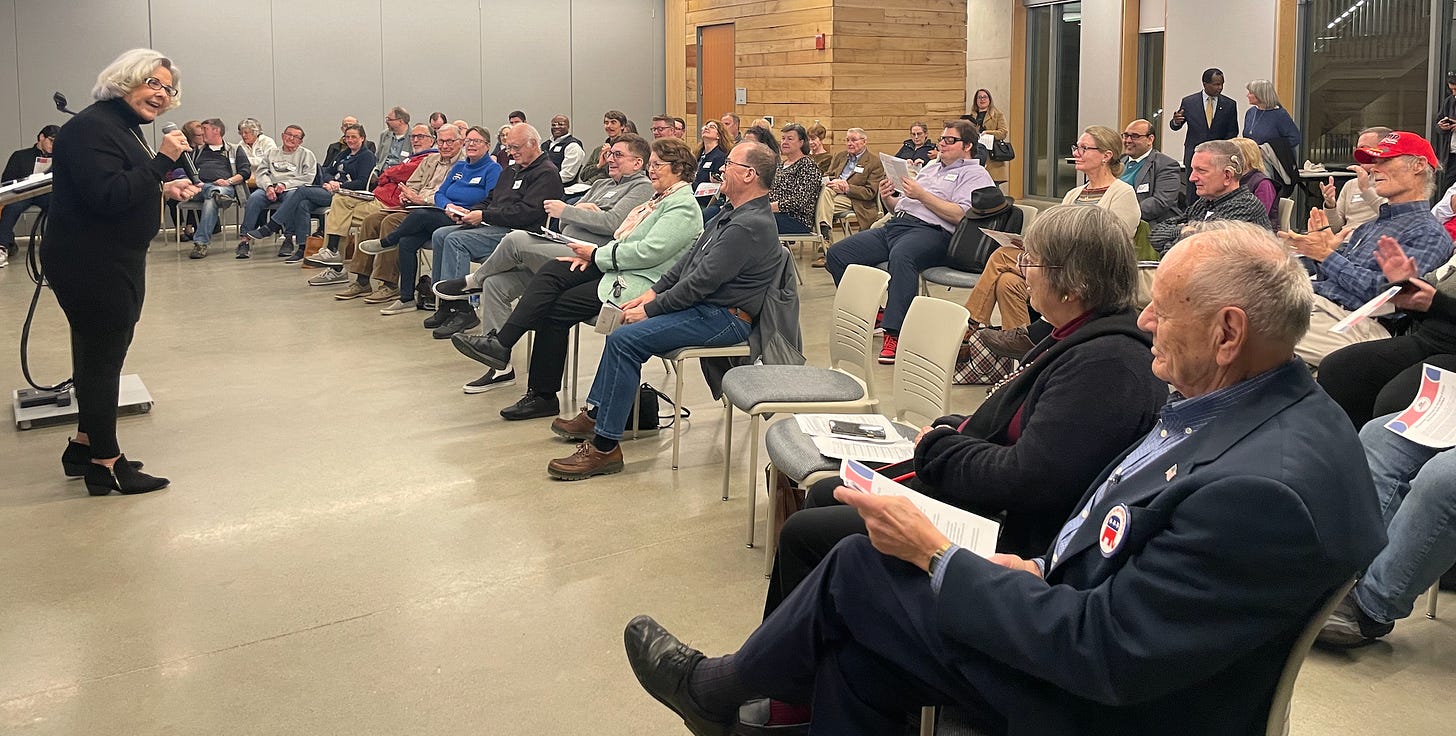How to Run an Effective Meeting for Your Political Organization
These six* steps will help grow your membership and activate your members
I want to welcome those of you who have recently subscribed to my Substack. I post several times a week, but I only send email notifications for one post every seven to ten days. To those of you who are receiving this in your inbox for the first time, welcome.
A woman came up to me after last night’s Arlington GOP meeting. She had recently been elected to a leadership position in her local women’s auxiliary organization. She had never before held an elected position in a political organization.
She asked me, “How can my organization run a good meeting?”
In the world of political activism and organization, meetings serve as the backbone of a successful organization. However, not all meetings are created equally. To truly galvanize your members and ensure productivity, your meetings need to be more than just a gathering — they must be an experience that leaves participants energized and ready to take action.
Here are six* essential strategies (and a bonus seventh) to run an effective meeting for your political organization:
1. Start on Time and End on Time
Respecting your members' time is fundamental to maintaining a professional and productive environment. Starting and ending meetings on time sends a clear message that you value the time of your members and understand the importance of their commitments outside the meeting. This practice not only helps in keeping the agenda focused but also builds a culture of punctuality and respect within the organization.
2. Work from a Prepared Agenda
A well-prepared agenda is the roadmap for a successful meeting. It outlines the topics to be discussed, allocates time for each item, and sets the stage for a structured and focused discussion. By circulating the agenda before the meeting, members come prepared, which enhances engagement and ensures that the meeting stays on track. A clear agenda allows for the efficient use of time and makes sure that all necessary topics are covered without unnecessary diversions.
3. Keep It Interesting: Invite Speakers and Give Members Valuable Updates
The monotony of routine meetings can be a motivation killer. To keep the energy high and your members engaged, introduce elements that spark interest. Inviting guest speakers who are experts in areas relevant to your political goals can provide fresh perspectives and valuable insights. Providing updates on the organization's achievements, ongoing projects, and future plans keeps members informed and invested in the collective mission. These practices not only make meetings more interesting but also educational and inspiring.
4. Make Your Members Want to Come Back
Creating an environment that members look forward to being a part of is crucial. This means fostering a sense of community, respect, and mutual support. Acknowledge contributions, celebrate achievements, and ensure that every member feels heard and valued. When members feel a strong connection to the group and its cause, they are more likely to remain active and enthusiastic participants.
5. “Give ‘em a title, and get ‘em involved.”
Involvement encourages commitment. By assigning roles or titles to members, you empower them to take ownership of the organization's mission. These roles can vary from leadership positions to responsibilities for specific tasks or projects. This not only helps in distributing the workload but also gives members a sense of purpose and belonging. An involved member is a motivated member.
6. Have a Call to Action
Every meeting should end with a clear call to action. What steps should members take before the next meeting? How can they contribute to the organization's goals in the meantime? A call to action provides direction and keeps the momentum going. It ensures that the energy and ideas generated during the meeting translate into tangible progress for the organization.
Bonus: Have Name Tags Available
You never know who is going to walk into your meeting, and you can bet your members don’t know everyone in attendance. People who have never attended your meeting may not know anyone else, and people who do attend your meetings may not know the names of the people they meet there, so make it easy for new people to make friends and for regulars to remember the names of the people they meet.
Running an effective meeting for your political organization requires careful planning, respect for members' time and contributions, and a clear focus on the organization's goals. By implementing these six strategies, you can ensure that your meetings not only serve their purpose but also inspire and mobilize your members towards achieving collective success.


